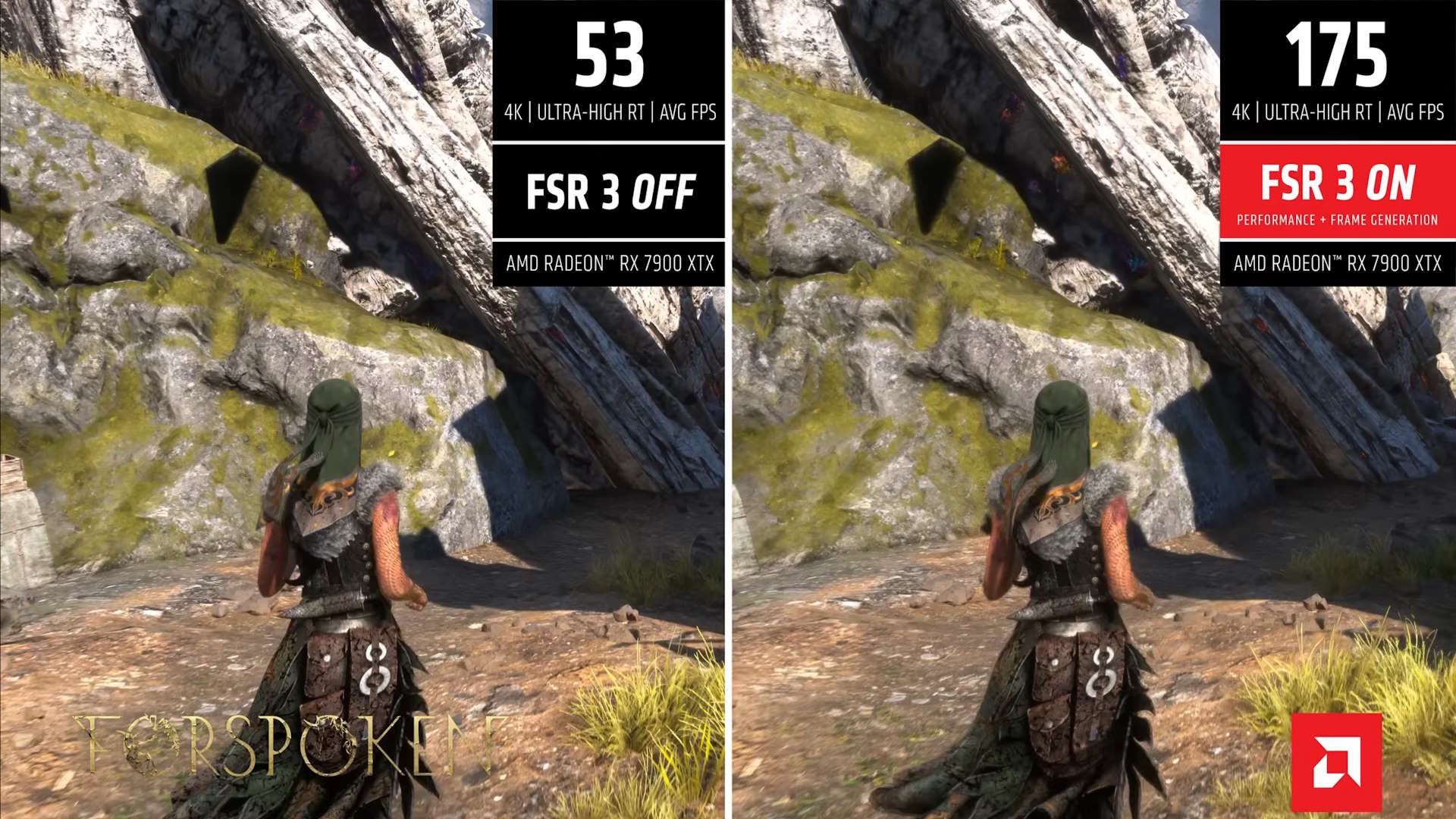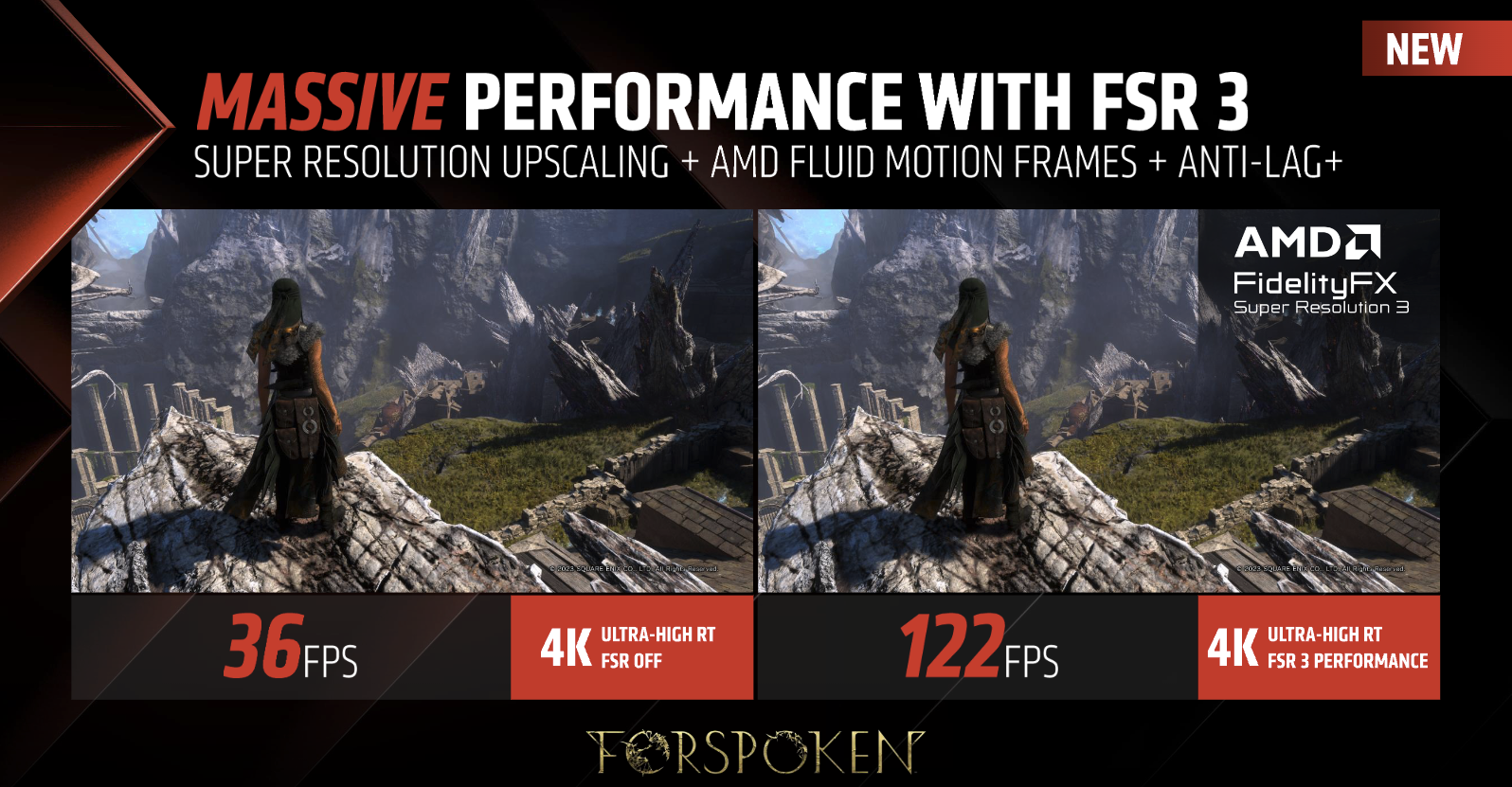AMD's universal Fluid Motion Frames technology could be headed for older graphics cards
Frame generation for all your friends!

We're still processing all the details surrounding AMD's new FSR 3 scaling technology and its new Fluid Motion Frames feature. But one of the more interesting elements was a game-agnostic version of Fluid Motion Frames designed to be compatible with all DX11 and DX12 games.
The problem was that this particular take on Fluid Motion Frames is limited to AMD's latest RDNA 3 GPUs, like the new Radeon RX 7700 XT and 7800 XT. That's a pity. Because a technology that's equivalent to Nvidia Frame Generation but works on older GPUs would be great.
However, AMD's graphics boss Scott Herkelman says that this feature could be coming to not only RDNA 2 GPUs, otherwise known as the Radeon RX 6000 graphics cards, but perhaps even older cards, too.
Speaking to Club386, Herkelman said RDNA 2 support would depend how well the industry receives Fluid Motion Frames tech in general.
"If there is good reception of AMD Fluid Motion Frames and gamers believe it to be worthwhile, we’ll take it to the next step and see if we can enable it on RDNA 2. If that goes well, then maybe older generations, too."
Herkelman also said that he'd prefer to see all the various scaling technologies from AMD, Nvidia and Intel consolidate around common standards.
"If I were to be blunt with you, it’s a little concerning that we’re still in this bifurcation stage. For example, with FSR, DLSS and XeSS, a game developer has to think about three different standards. That’s a lot of additional complexity that game developers shouldn’t have to deal with, so this is our push to say, hey look, there is a way we can do this for everyone by working together and consolidating efforts. Hopefully, we get to a one-standard approach for all, where developers can focus on making the best games and we focus on building the best hardware."
The biggest gaming news, reviews and hardware deals
Keep up to date with the most important stories and the best deals, as picked by the PC Gamer team.

Exactly how that would work isn't clear, especially as Nvidia's Frame Generation tech requires specialised optical flow accelerator hardware. However, AMD has a track record of making certain technologies that were once proprietary standard across the industry. The obvious example is adaptive sync, which started off as a proprietary Nvidia technology in G-Sync that required specific Nvidia hardware in a PC and the monitor.

Best CPU for gaming: The top chips from Intel and AMD
Best gaming motherboard: The right boards
Best graphics card: Your perfect pixel-pusher awaits
Best SSD for gaming: Get into the game ahead of the rest
With FreeSync, AMD made the technology much more open to the extent that Nvidia introduced a new G-Sync compatible tier that removed hardware restrictions and now nearly all gaming monitors support adaptive sync with both AMD and Nvidia GPUs—and Intel GPUs, too, of course.
It will be interesting to see if Nvidia responds in kind by opening out its equivalent Frame Generation technology. One obvious step would be to extend Frame Generation to RTX 30 Series GPUs which also have the optical flow accelerators that Nvidia says are critical to making Frame Generation work.
To find out more about AMD's new FSR 3 scaling technology and its frame-generating Fluid Motion Frames features, check out our in-depth guide here. As we highlighted, support for the game-specific and higher quality version of Fluid Motion Frames extends all the way back to the RX 5700. In many ways, it seems like the universal DX11 and DX12 version, which only uses optical flow analysis and lacks the motion vectors of the game-specific version, ought to be easier to run on older hardware.

Jeremy has been writing about technology and PCs since the 90nm Netburst era (Google it!) and enjoys nothing more than a serious dissertation on the finer points of monitor input lag and overshoot followed by a forensic examination of advanced lithography. Or maybe he just likes machines that go “ping!” He also has a thing for tennis and cars.

